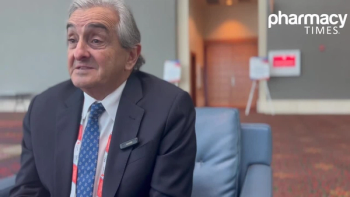
Closing HIV Treatment Gaps Essential to Ending Epidemic
Study highlights the importance of understanding, addressing, and bridging gaps in achieving viral suppression.
Viral suppression rates among people living with HIV (PLWH) have drastically improved across the United States, but disparities among younger and black PLWH need to be addressed, according to a recent study published in the Annals of Internal Medicine.
To meet the Joint United Nations Programme on HIV/AIDS target goals for HIV/AIDS elimination, at least 73% of PLWH need to achieve viral suppression. According to an editorial also published in the Annals of Internal Medicine, only 51% of the 1.1 million PLWH in the United States had achieved viral suppression as of 2015.
The study evaluated viral suppression trends among PLWH in the United States. The study authors determined annual viral suppression rates from 1997 to 2015 and repeated analyses with tests limited to 1 random test per person per year. Associations between viral suppression or continuous viral load levels and demographic factors, substance use, adherence, and integrase strand transfer inhibitor (ISTI) use were examined.
According to the study findings, viral suppression increased from 32% in 1997 to 86% in 2015, on the basis of all tests among 31,390 PLWH. The improvements were not equally distributed across different demographic and clinical populations. The researchers determined that being older and using an ISTI-based regimen decreased the odds of having a detectable viral load, whereas black PLWH had higher odds. Similar patterns were observed with continuous viral load levels.
The findings provide a better understanding of viral suppression gaps due to social and economic barriers to care, but further research is needed to identify ways to address and resolve these disparities, the researchers noted.
Improving rates of viral suppression represents an important step toward ending the HIV/AIDS pandemic, but more can be done to stem transmissions. Bringing PLWH into care continues to be a barrier, and it is recommended that providers
The editorial authors highlighted the importance of treatment as prevention (TasP) to achieve viral suppression in controlling and potentially stopping the spread of HIV. However, if TaSP is to help reach this goal, closing treatment gaps is essential.
“For TasP to help achieve the goal of ending the HIV epidemic in the United States, it is critical to understand, address, and bridge implementation gaps,” the authors concluded.
References
Nance RM, Delaney C, Simoni JM, et al. HIV viral suppression trends over time among HIV-infected patients receiving care in the United States, 1997 to 2015: a cohort study. Annals of Internal Medicine. 2018. Doi: 10.7326/M17-2242
Marston HD, Dieffenbach CW, Fauci AS. Ending the HIV Epidemic in the United States: Closing the Implementation Gaps. Annals of Internal Medicine. 2018. Doi: 10.7326/M18-1944
Newsletter
Stay informed on drug updates, treatment guidelines, and pharmacy practice trends—subscribe to Pharmacy Times for weekly clinical insights.


















































































































































































































